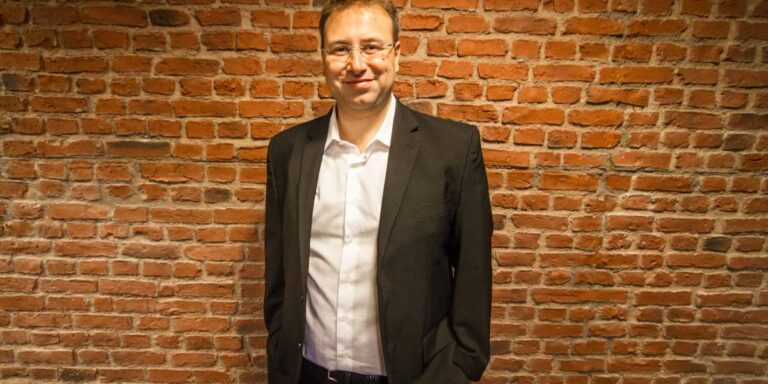Theranos is a classic example of venture capital funding gone wrong. The company, which claimed to have developed a groundbreaking blood-testing technology, raised about $724 million from investors. It was valued at $9 billion before it collapsed due to its fatal flaw: its product didn’t work. It was all hype, no real value. Even when venture-backed founders aren’t cheating, they tend to prioritize fundraising and scaling at the expense of the product.
I founded a company called Jotform over 18 years ago. Growth was slow at times due to lack of external funding, but today we have over 25 million users worldwide. I learned a lot about bootstrapping and how it creates the right mix of pressure, frugality, and creativity to develop a great, profitable product. Here, I will elaborate on why venture capital funding leads to poor product development in startups.
Where VC funding goes wrong
Many people think that “small business” and “startup” are interchangeable. But ask any founder, and they’ll probably tell you their ambitions are big. Bootstrappers are no different. In fact, a recent report from startup lending firm Capchase found that bootstrapped SaaS companies grow just as fast as venture-backed companies, even though they spend only a quarter of what venture-backed companies do to acquire new customers.
Additionally, studies have found that of the top 100 unicorn startups, those valued at over $1 billion, 64% never make a profit.
As the Capchase report explains, before investing in growth, top startups focus on ensuring product-market fit – finding the fit between their product and the people who need it. The result is satisfied customers, high demand, and organic, sustainable growth. An astounding 34% of startups fail because they can’t find the right product-market fit. Great ideas don’t always lead to success.
For example, let’s say you’re a venture-backed startup that isn’t seeing the growth you hoped for. You’ll probably increase spending on sales and marketing campaigns, shortening your runway (the length of time you can sustain your business on your cash reserves alone). And maybe you’ll get the impact you want (customer acquisition), but it’s risky and the long-term returns are uncertain. If you’re a bootstrapper, you don’t have that option.
So what do you do instead?
Bootstrapper Differences
Bootstrapping may sound like a shoddy way of doing things, but in many ways it’s a luxury. Bootstrappers have the luxury of being relentlessly focused on their product and not having to answer to anyone.
When I first started the company, I loved our first product, online forms, because I saw the potential to make people’s lives easier. The ease of use factor was my biggest concern, hence our original tagline “The Easiest Form Builder”. I loved the product so much and was so happy to see people using it that I gave it away for free (while working a 9-to-5 day job). From February 2006 to March 2007, we didn’t have a paid version of the product. Nevertheless, this was a critical time for the company.
Why? Because we listened to our early users and received valuable feedback on how they used our product and how we could improve it. We iterated and refined it before releasing a paid version. We were able to grow our customer base without spending a single cent on marketing because people genuinely understood the value of our product.
If I had investors who demanded I hit arbitrary KPIs, I would have spent my early years mastering PR and sales — neither of which I was an expert in, nor did I enjoy. If I had been forced to focus solely on those aspects of the business, the company would never have been successful.
Most Important Stakeholders
Now, as a mentor to several founders, I always share the 50-50 rule: spend half your time on the product and the other half on growth. I also encourage founders to release and get their most important features in front of users as soon as possible, so that you can elicit important feedback on the product before you start charging people for it.
This is another important point: never stop listening to your users. They are your most important stakeholders. If people get too hung up on the product and ignore whether it meets the needs of the users, it is bound to fail. To grow your business organically, you need to put your ego aside and understand that even a great product is useless if it does not meet the specific needs of your target users.
Another thing that sets bootstrappers apart is their focus on making an impact. For example, a Capchase report found that the healthiest companies aren’t those that spend the most on sales and marketing, but rather that they have a “keen” understanding of which channels and campaigns have the most impact and generate profits faster. In the early stages of a startup, perfecting your product is more impactful than a flashy marketing campaign. With tight budgets and small teams, bootstrappers tend to apply this mindset to everything. That’s why I tell entrepreneurs and team members: Automate the mundane tasks, freeing up your time for “work that matters” – more meaningful work that makes a difference to your company or your career.
A recent report predicts that VC funding will fall to a six-year low in 2024. This may have come as a shock to the entire startup world, but it shouldn’t. Bootstrapping is a safer, more reliable method. And perhaps most importantly for companies, it creates the optimal environment to develop a better product for their customers.
See more must-read articles luck:
The opinions expressed in Fortune.com editorial articles are solely those of the authors and do not necessarily reflect the opinions or beliefs of the authors. luck.

